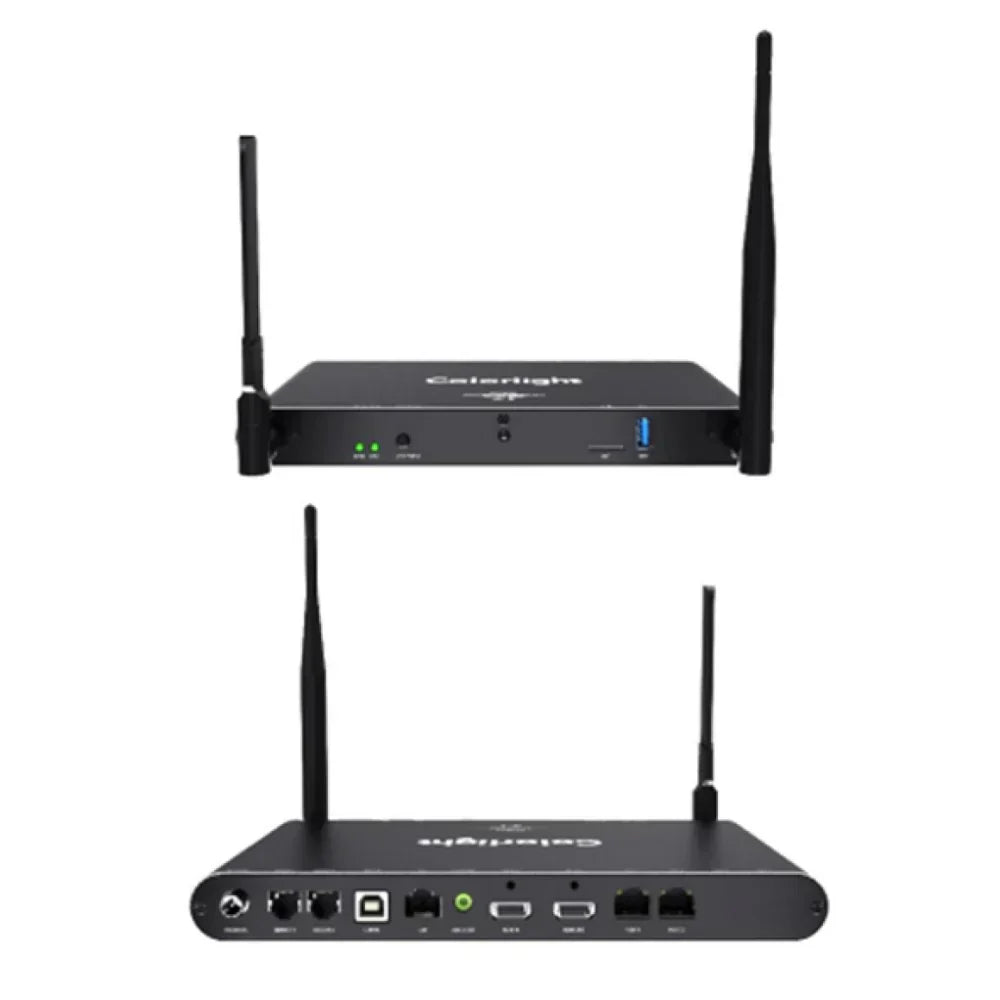In today’s rapidly advancing digital display technology, multimedia players and asynchronous controllers (Multimedia Players / Async Controllers) have become essential components in LED display systems. They not only handle content playback but also play a crucial role in data transmission, system management, and operational efficiency. Unlike synchronous control systems, asynchronous controllers do not rely on real-time input signals, giving them a clear advantage in advertising screens, digital signage, window displays, and large standalone projects. This article will provide a comprehensive analysis of the technology’s development trends and practical value, covering technical principles, brand solutions, application scenarios, and selection strategies.
✅ Core Value of Asynchronous Controllers
The primary function of multimedia players and asynchronous controllers is to deliver video or image content from storage media or network sources to LED displays, achieving efficient and stable playback. Their value in real-world applications includes:
1️⃣ No Need for Real-Time Input
Asynchronous controllers can schedule pre-stored content to play automatically, without requiring a connected computer or live signal.
For example, the NovaStar TB20 Plus Multimedia Player can store video and image content locally or on external storage, ensuring the display continues to operate unattended.
2️⃣ Flexible Content Management
Asynchronous controllers often support multiple input methods, such as Wi-Fi, USB, and LAN, enabling remote updates and multi-screen control.
For instance, the ColorLight A35 Multimedia Player can centrally manage multiple screens over a local network, allowing scheduled playback and batch content updates.
3️⃣ Reduced Maintenance Costs
Independent playback and centralized management allow operators to update content without frequent on-site intervention, lowering labor costs and minimizing system downtime.
4️⃣ Compatibility Across Multiple Application Scenarios
Whether for commercial advertising, information displays, or educational and exhibition projects, asynchronous controllers can be configured to meet different resolution and playback requirements.
✅ Mainstream Brands and Technical Features
Different brands of multimedia players and asynchronous controllers have unique strengths, and selecting the right one depends on project requirements and budget.
NovaStar: High Reliability and Professional Engineering Choice
NovaStar offers a wide range of asynchronous players that combine stability and functionality, suitable for large-scale projects and high-intensity playback scenarios. Examples include:
These devices offer large storage capacity, fast loading, and multiple interface support, meeting the high load and multi-screen control requirements of complex projects.
ColorLight: Cost-Effective and Flexible Expansion
ColorLight asynchronous controllers perform well in small and medium-sized projects, supporting LAN and USB updates as well as multi-screen synchronized playback. For example:
With a simple management interface, operators can quickly deploy advertisements or information content, balancing cost and efficiency.
Huidu: Intelligent Management and Mobile Support
Huidu players focus on user-friendliness and smart control, supporting content updates and remote management via mobile apps, making them ideal for retail, exhibition, and small-scale commercial display projects.
-
The HD-A3 series provides mobile control, USB upload, and multi-screen linkage, enabling flexible content scheduling in diverse scenarios.
✅ Application Scenarios
Multimedia players and asynchronous controllers are primarily applied in the following scenarios:
1️⃣ Commercial Advertising and Outdoor Displays
Frequent content updates are required, and asynchronous controllers allow centralized uploading and scheduled playback, reducing operational frequency and labor costs.
2️⃣ Information Display and Digital Signage
In places like train stations, airports, and corporate campuses, asynchronous controllers can centrally manage and schedule multiple screens without on-site intervention.
3️⃣ Exhibitions, Education, and Stage Presentations
Asynchronous controllers can run independently without relying on computers or live signals, ensuring exhibition or performance content plays in a predetermined sequence, enhancing stability and reliability.
4️⃣ Remote and Multi-Site Deployment
For multi-screen setups across retail, chain stores, or distributed advertising networks, asynchronous controllers enable centralized network management, ensuring content consistency and timely playback.
✅ Recommended Multimedia Players / Async Controllers
| Model | Key Features |
|---|---|
| NovaStar TB20 Plus | Large storage, dual-port output, Wi-Fi / USB / LAN support, suitable for commercial advertising and medium-to-large displays |
| NovaStar TB10 Plus Taurus | Multi-screen linkage and asynchronous playback, compatible with various LED systems, convenient for remote management |
| NovaStar TU15 Pro | Intelligent control processor, fast loading and high reliability, suitable for complex projects |
| NovaStar TU20 Pro | High-performance playback controller, supports high resolution and multi-screen content |
| NovaStar TU4K Pro | 4K support, high pixel load capacity, intelligent control solution |
| ColorLight A35 | Ideal for small-to-medium projects, supports LAN / USB updates, multi-screen synchronized playback |
| ColorLight A100 | Suitable for medium-to-large asynchronous playback applications, with a simple and user-friendly interface |
✅ Conclusion
As LED displays become more prevalent in commercial, educational, exhibition, and public spaces, asynchronous multimedia players have become a core tool for improving management efficiency and ensuring stable playback. With proper selection and deployment, whether for advertising, information displays, or stage and exhibition projects, operators can achieve efficient content management, stable playback, and remote scheduling, fully unlocking the visual potential and commercial value of LED systems.

